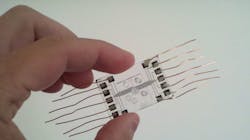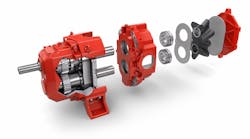A team of researchers from the University of Marburg, Germany, and the University of Texas at Austin, have developed a new water desalination process they say is among the cheapest and most energy-saving ever created. Moreover, it seems to offer a solution to a number of problems that previous water desalination projects have struggled to resolve, according to the researchers.
The process, called electrochemically mediated seawater desalination, eliminates the need for membranes by separating salt from water at the microscale, the scientists claim. The technique has been described in the journal Angewandte Chemie.
The desalination process is enabled by a small computer chip, invented by Richard M. Crooks at the University of Texas and Ulrich Tallarek at the University of Marburg. The chip creates a series of channels split into two branches through which seawater would be run. Each of the two smaller channels would be connected to an electrode placed at the point where the channels branch out from one another. By applying a small amount of energy (about three volts), scientists are able to target electrodes, changing some of the chloride ions, which have negative charges, into neutral chlorine.
RELATED: Energy consumption biggest expense for desalination plants
So far, Crooks and his colleagues have achieved nearly 25 percent desalination but drinking water requires 99 percent desalination. However, the team of researchers say that additional studies are planned and they are quite confident that the goal will be achieved and they will be able to produce large amounts of drinking water. Researchers explained that the success of the experiment was proof that the principle worked and that improving the desalination process was a matter of time.
The new method would be particularly helpful for water-stressed areas around the world, including those in Saudi Arabia and North Africa, the University of Texas said. Many such regions have access to a large quantities of seawater but lack the energy infrastructure or the funds necessary to convert it into drinking water. The device would save lives, as millions of deaths per year are attributed to water-related causes, the university claimed.
Although it seems promising, researchers still need to overcome the key challenge of scaling up the process. At present, the current structure produces just 14 nanoliters of water per minute. According to Crooks and his team, in order to make the technique practical enough for communal use a device would have to produce many liters of water per day. The team of scientists is continuing to work on improving the process, Crooks stated.



